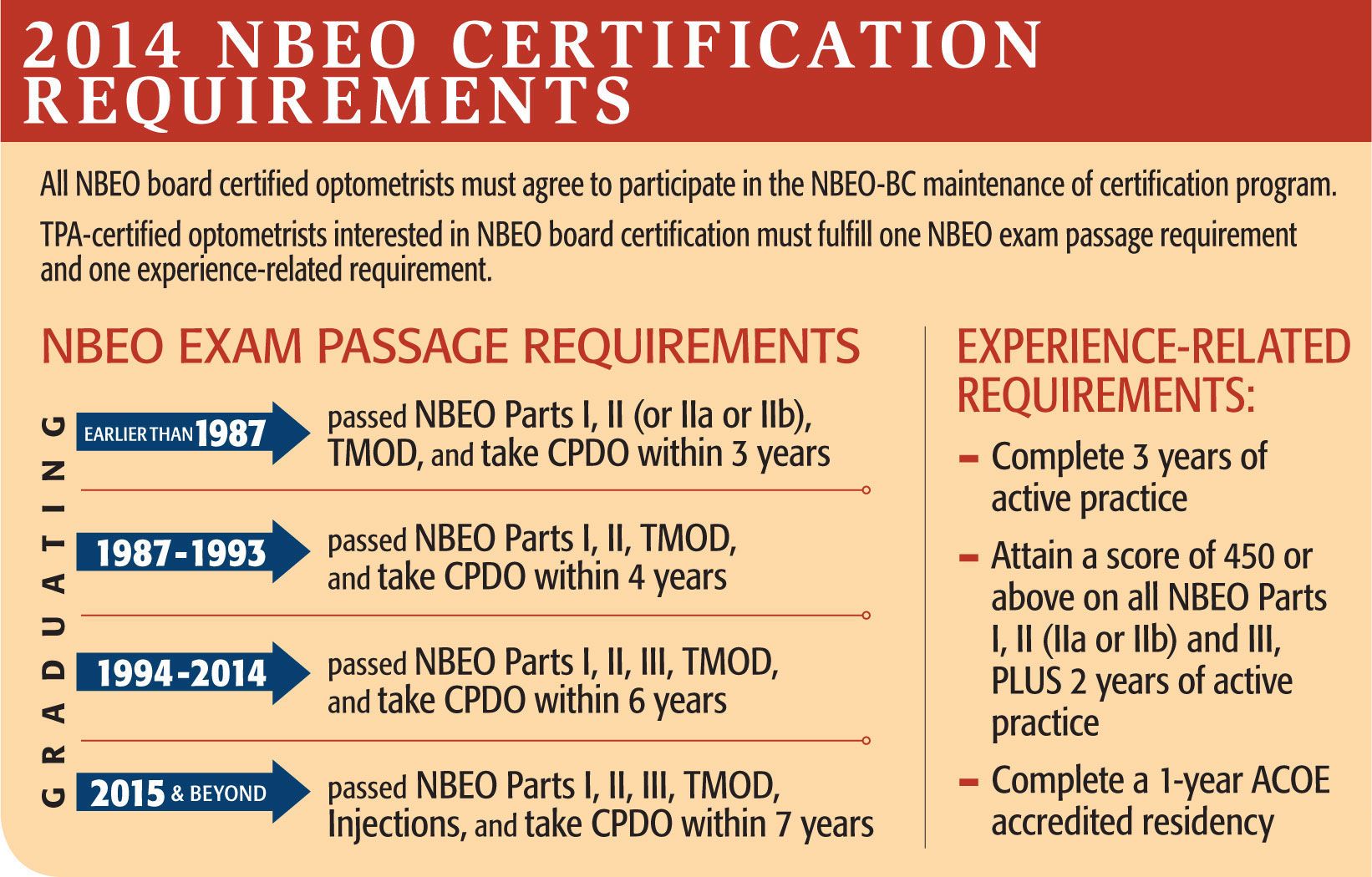EXCLUSIVE: NBEO unveils board certification process
Recently, the National Board of Examiners in Optometry (NBEO) launched a program to offer board certification to optometrists, with the first test taking place in March 2014. A new non-profit entity, NBEO-Board Certification, Inc., (NBEO-BC) was created to grant board certification. The company worked with the NBEO to develop the Continued Professional Development in Optometry (CPDO) exam.

Recently, the National Board of Examiners in Optometry (NBEO) launched a program to offer board certification to optometrists, with the first test taking place in March 2014.
A new non-profit entity, NBEO-Board Certification, Inc., (NBEO-BC) was created to grant board certification. The company worked with the NBEO to develop the Continued Professional Development in Optometry (CPDO) exam.
“There has been confusion for a number of years,” says Jack Terry, OD, PhD, president of NBEO-BC, and executive director of NBEO, speaking exclusively to Optometry Times. “We know that a large number of optometrists have felt that they are board certified purely because they had passed NBEO Parts I, II, and III and Treatment and Management of Ocular Disease (TMOD). The National Board has felt that board certification without a significant maintenance of certification program is an inappropriate alignment.”
As the National Boards currently stand, optometrists are not required to reassess their knowledge after passing Parts I-III and TMOD. Instituting the CPDO exam will give optometrists the opportunity to stay current with changes in optometric knowledge.
Says Terry: “The impetus behind this board certification is to acknowledge the currency of having passed the National Boards Parts I, II, III, and TMOD and that there is a certain shelf life of knowledge that has been assessed. Right now, there is no reassessment ever through NBEO. There is no maintenance of certification. There is no way to give individual optometrists insight via an intermittent diagnostic report on how well they’ve done in keeping up with the science of optometry. This new program will solve some of those awkward issues.”
Maintenance of certification will be required every 7 years for ODs certified under NBEO’s program. In addition to knowing passage or failure, optometrists taking the maintenance exam will know strengths and weaknesses of 9 assessment topics. Such information will allow ODs to tailor ongoing continuing education to bolster areas of weakness.
The CPDO exam carries a $500 fee and will be administered at more than 200 testing centers across the country. The first test is scheduled for March 3, 2014, and another date is planned for the third quarter of 2014. Moving forward, the number of exam dates per year will increase as demand grows.
NBEO and NBEO-BC announced the new board certification program via its Web sites. NBEO is in the process of sending letters and e-mails to its members with information.
Requirements for board certification
According to the NBEO-BC Web site, TPA-certified optometrists interested in NBEO board certification must fulfill one NBEO exam passage requirement and one experience-related requirement.
NBEO exam passage requirements:
• ODs graduating earlier than 1987: passed NBEO Parts I, II (or IIa or IIb), TMOD, and take CPDO within 3 years
• ODs graduating 1987-1993: passed NBEO Parts I, II, TMOD, and take CPDO within 4 years
• ODs graduating 1994-2014: passed NBEO Parts I, II, III, TMOD, and take CPDO within 6 years
• ODs graduating 2015 and beyond, passed NBEO Parts I, II, III, TMOD, Injections, and take CPDO within 7 years
Experience-related requirements:
• Complete 3 years of active practice
• Attain a score of 450 or above on all NBEO Parts I, II (IIa or IIb) and III, PLUS 2 years of active practice
• Complete a 1-year ACOE accredited residency
All NBEO board certified optometrists must agree to participate in the NBEO-BC maintenance of certification program.
Newsletter
Want more insights like this? Subscribe to Optometry Times and get clinical pearls and practice tips delivered straight to your inbox.